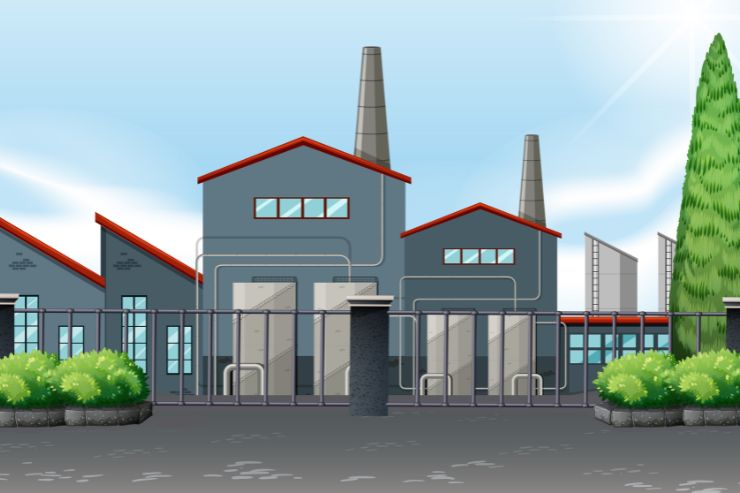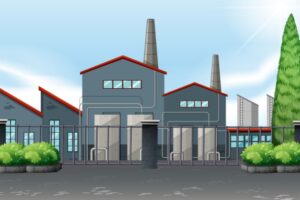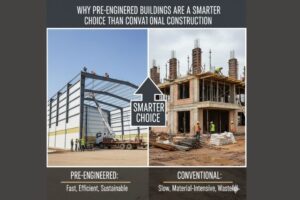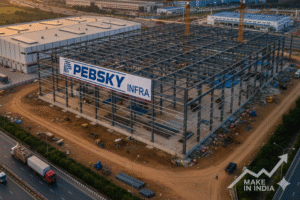In the modern industrial landscape, efficiency, scalability, and cost-effectiveness are critical to business success—especially when it comes to infrastructure. This is where Pre-Engineered Buildings (PEBs) offer a smart, forward-thinking solution. Known for their rapid construction, flexibility, and durability, PEBs are revolutionizing industrial construction across sectors like manufacturing, warehousing, automotive, and agriculture.
This blog explores the benefits of pre-engineered building systems specifically for industrial applications, showing how they contribute to optimized operations, lower costs, and long-term growth.
Table of Contents
ToggleWhat Are Pre-Engineered Buildings?
Pre-engineered buildings are structures that are designed and manufactured in a factory and then assembled on-site. Unlike conventional buildings, where materials are cut and constructed on location, PEBs come with prefabricated components such as steel frames, panels, and roofing systems. This approach makes PEBs faster, more cost-effective, and highly customizable, making them an ideal choice for a variety of industrial uses.
Key Benefits of Pre-Engineered Building Systems for Industrial Use
1. Cost-Effectiveness
One of the most significant benefits of pre-engineered building systems is their affordability. Standardized components, efficient manufacturing processes, and minimal on-site labor help reduce the overall project cost. Less material wastage and shorter construction cycles contribute to further financial savings.
2. Faster Construction Time
Because all components of a PEB are prefabricated in a controlled factory environment, they can be assembled much faster on-site. This allows for shorter project timelines compared to traditional construction, sometimes cutting build time by more than 50%.
3. Design Flexibility and Customization
PEBs are not “one-size-fits-all.” They can be tailored to meet specific industrial needs, including high ceilings for cranes, open interiors for equipment placement, and specific layouts for production lines or storage zones.
4. Durability and Strength
Pre-engineered buildings are typically constructed using high-strength steel, which provides excellent resistance to environmental challenges such as heavy loads, wind, rain, and even seismic activity.
5. Energy Efficiency
Modern PEBs can be equipped with energy-saving features such as insulated panels, cool roofing systems, and natural lighting solutions like skylights.
6. Reduced Maintenance Requirements
Steel structures require minimal maintenance compared to buildings made with traditional materials such as concrete or wood. Steel resists pests, rot, and corrosion (when properly coated), making it a low-maintenance option.
7. Sustainability
PEBs support green building practices through efficient material use, recyclability, and reduced construction waste. Many manufacturers also use eco-friendly coatings and paints.
8. Clear Span Design for Maximum Usable Space
A defining feature of PEBs is their ability to provide wide, column-free interiors (up to 90 meters or more). This clear span design maximizes usable floor space for machinery, storage, or production lines.
Common Industrial Applications of Pre-Engineered Buildings
The adaptability and strength of PEBs make them suitable for a wide range of industrial uses. Here are some common applications:
Warehouses
Ideal for bulk storage and logistics, PEB warehouses provide large open spaces, high ceilings, and loading bays. Their quick construction also means faster setup for supply chain operations.
Factories
PEBs can be customized to support various manufacturing processes, from food production to textile and electronics, providing space for machinery, workers, and inventory.
Manufacturing Plants
These structures can accommodate specialized industrial functions, such as chemical processing or heavy-duty production lines, with enhanced safety and flexibility.
Automotive Industry
PEBs are used for vehicle showrooms, assembly plants, service centers, and garages due to their durability, open design, and cost efficiency.
Agricultural Buildings
From grain storage and livestock shelters to equipment barns, PEBs are a reliable solution for modern agriculture thanks to their resistance to harsh weather and pests.
Also Read – How to Choose the Best PEB Manufacturer in Ghaziabad?
Conclusion
The benefits of pre-engineered building systems make them a powerful asset for industrial applications. From cost savings and fast construction to durability and design flexibility, PEBs offer unmatched value for businesses looking to scale quickly and operate efficiently.
As industries continue to evolve and demand greater operational agility, pre-engineered buildings provide the ideal infrastructure foundation—strong, scalable, and sustainable.
Frequently Asked Questions
1. Why are PEBs preferred for industrial use?
PEBs are cost-effective, quick to build, and highly customizable, making them ideal for industrial needs like manufacturing, warehousing, and logistics.
2. How long does it take to construct a PEB?
Depending on size and complexity, a PEB can be constructed 30–60% faster than traditional buildings.
3. Are PEBs durable enough for heavy-duty industrial work?
Yes, PEBs are made from high-strength steel and designed to withstand heavy loads and harsh environments.
4. Can PEBs be expanded later?
Absolutely. One of the key advantages of PEBs is their scalability, allowing businesses to expand as needed.
5. Are PEBs environmentally friendly?
Yes, many PEBs are built with recyclable materials and designed with energy-efficient features that reduce their environmental impact.






